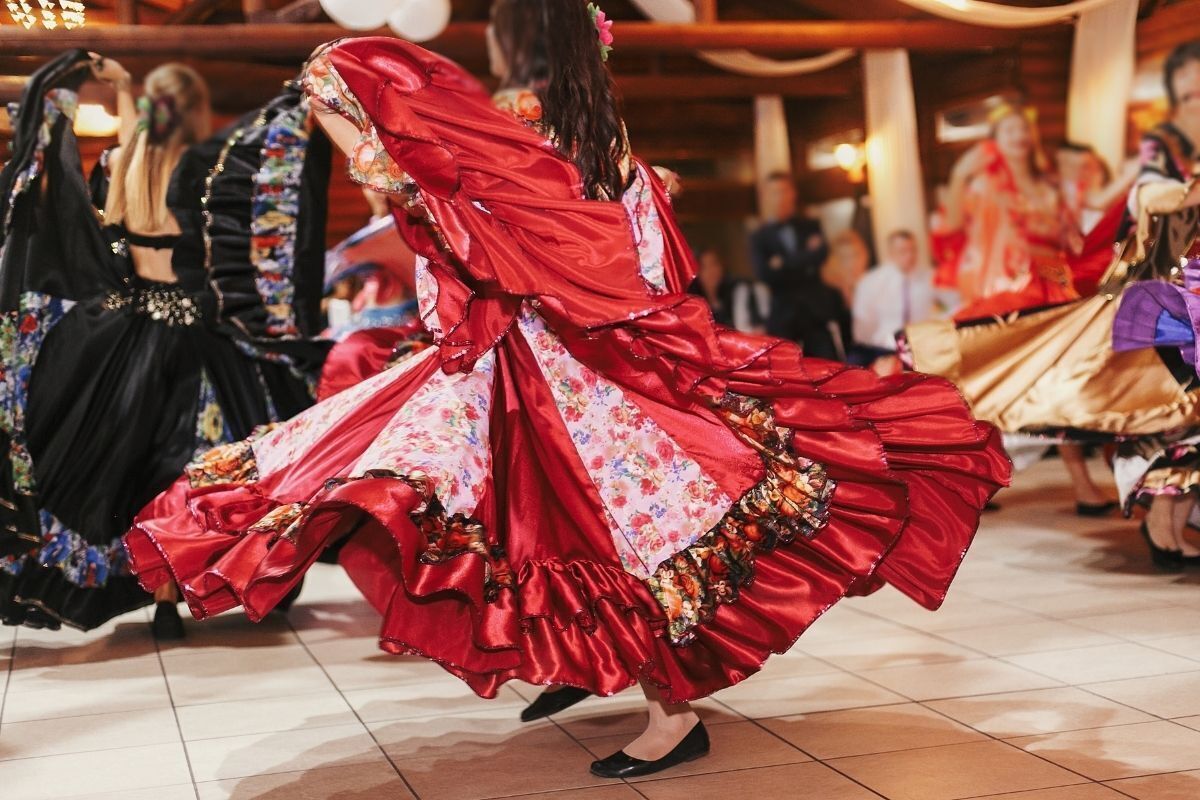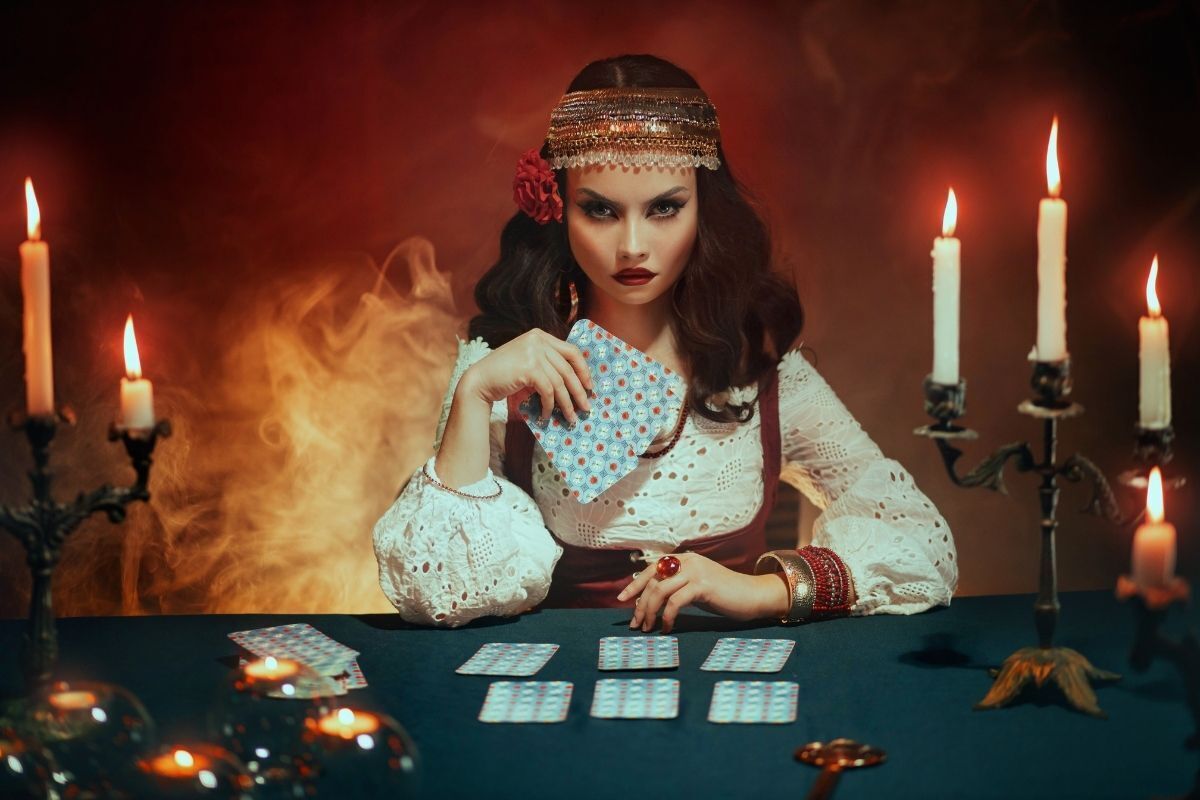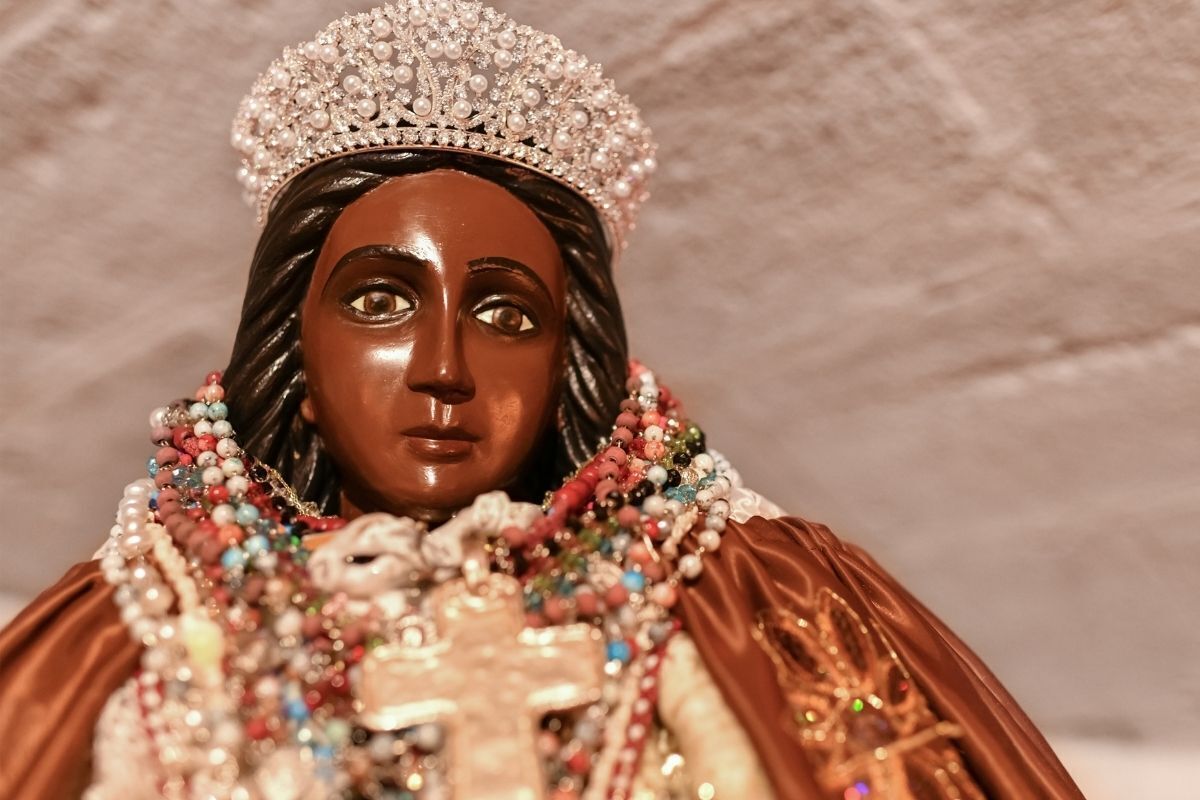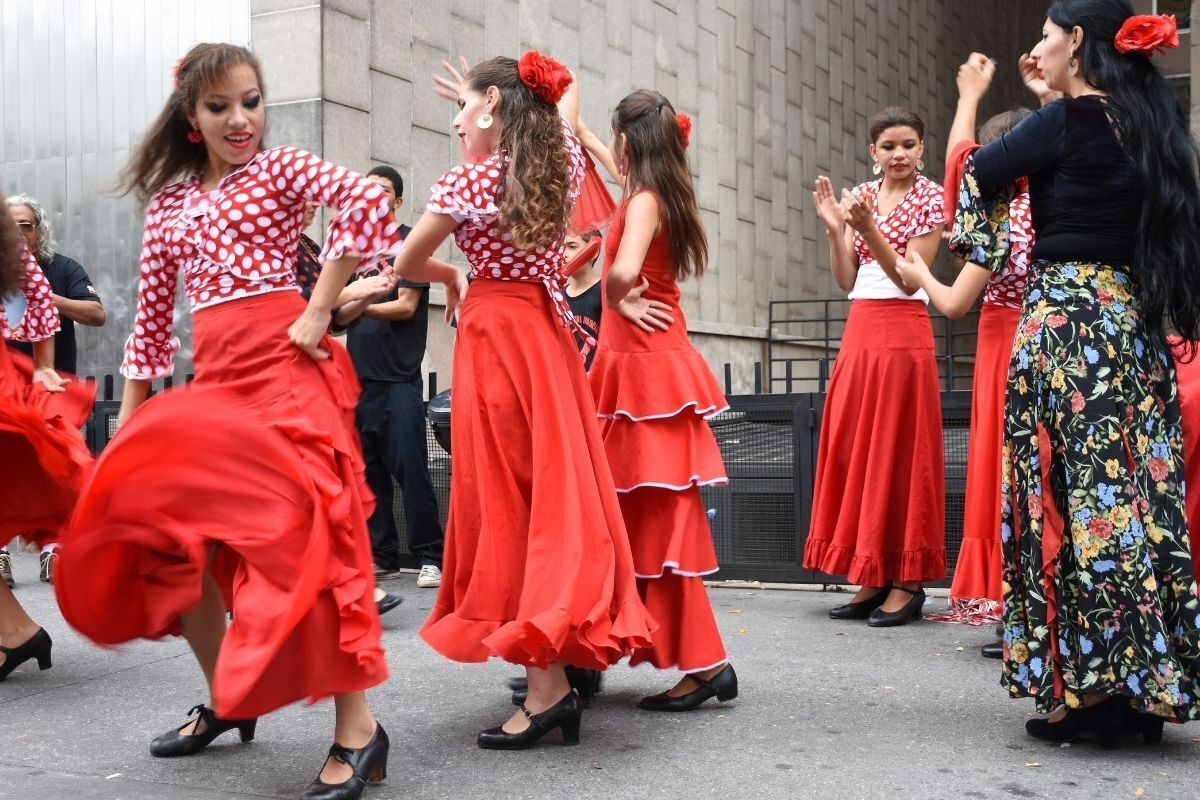Table of contents
Do you know what Optcha means?

Optchá is one of the most popular gypsy greetings, especially among Umbanda terreiros. In Romane or Romani, the word means "hail!" The expression is also often used in gypsy dance, such as "Bravo" and "Olé".
In war, Optcha is translated as a cry of strength. In addition, Optcha can also be used in prayer. It is an expression that brings positive energies and amplifies the vibration. In this article you will learn how and when to use the expression Optcha to attract good luck. We will also talk about the patron saint of the gypsies, Saint Sara Kali. Enjoy your reading!
Understanding more about Optcha

Before we talk about the gypsy people and their relationship with the expression Optchá, we need to understand its origin, concepts and uses. It is also interesting to understand a little about other expressions used by this people, known for their joy. Learn more below!
Source
According to the Centro de Pesquisas da Cultura Romá no Brasil, the word Optchá is of Hungarian origin. The expression, which became popular mainly in Umbanda terreiros, was brought to Brazil when gypsies from Hungary arrived here.
In Umbanda, the word Optchá is linked to the egregor of the Orient Gypsy line, entities different from the Exu Gypsies. For the Gypsy people, however, the word Optchá has no religious meaning. It is worth remembering that the incarnated Gypsies are an ethnic group and not a religion.
Definition and concept
The word Optchá has no direct translation into Portuguese. Thus, due to its uses, in dance, rituals and in war, this expression took on the meaning of a greeting, wishing strength and success.
Some people say that Optcha is not a Romani word, others believe that the word is of Hungarian origin. The fact is that the expression is now recognized as a greeting to the Roma people. However, this word is not well accepted among the more traditional Roma. In the course of this article, you will learn why.
When to use it?
Whenever there is a tribute, whether in Umbanda or Quimbada, the expression Optchá can and should be used as a greeting to the entities. Optchá can also be used in a gypsy dance performance, meaning "bravo". Or even as a prayer.
Optcha is commonly used to energize the offerings to the Roma people. However, the term can be taken as an offense to some types of the Roma people.
When not to use it?
The proper use of the term Optcha is not written down in any bibliography on Roma people, so some say that the word Optcha is not of Romani origin and does not belong to the Roma vocabulary.
The use of the word Opctchá can still be inappropriate with certain Romani tribes, so in some of them the word can even be taken as an offense, something considered culturally normal.
Resistance to use of the word by more traditional Roma
The Roma people are currently divided into three main groups: the Kalon, Iberian Roma who speak Shib Kalé or Caló, a mixture of Romani, Portuguese and Spanish; the Romi, originally from the Balkan countries and Eastern Europe, who speak Romani and are subdivided into five other subgroups; and finally the Sinti, most present in Germany, France and Italy. This last group speaks Romani - Sintó.
The word Optcha is not well accepted among the more traditional Roma, especially in those clans that perpetuate the Roma traditions of their origin. According to the oldest Roma, the word Optcha is not welcome because it does not belong to Romani or any other Roma dialect.
Relationship of the expression with the gypsies of Umbanda
The Gypsies, for Umbanda, are a line of work linked to physical, mental and spiritual well-being. Gypsy people can work in the Exu line or in their own lines, called Oriental. Although they represent the disincarnate Gypsy people, the rituals for these two lines are very different.
However, whenever working with the gypsy people in Umbanda, the expression Optchá is often used, not only to increase the vibration of the mediums in the terreiro but also as a greeting of respect and faith.
Other greetings common to gypsies
Those who like and/or worship the gypsy people know that among them there are other greetings as important as Optchá. One of them is Ori Oriô, which does not have an exact translation into Portuguese, but is interpreted as a greeting of respect to the gypsy entity that is on earth.
This expression is part of many points of Umbanda. Another common expression among the gypsy people is "Alê Arriba", which means strength (upwards). This expression is common in gypsy camps and is used to wish good luck and good energy.
Prejudice against Roma

Until today, no one knows for sure the origin of the Roma people. But for being a nomadic and free people, who live under their own laws, and use magic to make money, the Roma have always been discriminated and labeled as scum. In the following you will know a little more about this people also known as the people of love.
Prejudice throughout history
Throughout history, the Roma people have suffered persecution and prejudice. To give you an idea, this people was the victim of one of the greatest war crimes, when, during the Second World War, Adolf Hitler had thousands of Roma arrested and killed.
In Portugal, Spain, France, Switzerland and England it was no different. Persecuted for their nomadic and wandering nature, in these countries the Roma people also suffered from prejudice and discrimination.
The arrival of gypsies in Brazil took place around 1940/1950. And as hospitable as Brazilians are, here too there was and still is prejudice against gypsies, especially those who live in clans.
Gypsy myths and stereotypes
Throughout their existence, the Roma have been marked by negative stereotypes. One of the best known is that which accuses the Roma people of being responsible for stealing children. Unfortunately, even today when the Roma people are mentioned, the collective imagination produces a prejudice that this ethnic group is linked to crime and illicit activities.
In Brazil, the largest gipsy communities are located in the states of Bahia, Minas Gerais and Goiás. There are about 500 thousand people in total who, despite being in the 21st century, are still not recognized as citizens. One of the consequences is the forgetfulness of their cultures and the denial of their identity for fear of not being accepted.
Also know the prayer "Optcha, Saint Sara Kali".

The origin of Saint Sara Kali, patron saint of the gypsies, varies according to the clan. One version says that she lived in the south of France. In another, Saint Sara Kali was of Egyptian origin and was taken to Palestine as a slave. If you want to know more about this powerful saint canonized by the Catholic Church, continue reading this article.
Who is Saint Sara Kali?
Both versions we have seen above identify Saint Sara Kali as accompanying the three Marys, who followed Jesus Christ. Considered the patron saint of the gypsy people and canonized by the Catholic Church in 1712, Saint Sara Kali was one of the first black saints in Catholicism. However, the worship of this saint by the Church is still rare.
Saint Sara Kali is also known as the patron saint of the exiled and desperate. Many faithful recognize her as the protector of good childbirth and of women who want to become pregnant. The feast in commemoration of the canonization of Saint Sara takes place on May 24 and 25.
Visual characteristics
The ancients say that Saint Sara had dark skin, which is why she was nicknamed Kali (which means black in Romani). The image of Saint Sara Kali is dressed in pink, blue, white and gold.
The image of Saint Sara is also usually adorned with flowers, jewellery and colourful scarves, things that Sara liked to wear during her earthly passage. Popular belief is that the connection to the saint is through the eyes of Saint Sara Kali, as they contain the strength of the mother, the sister, the woman, the energy of the smile and the magic of love and peace.
Miracles
One of the first miracles performed by this saint dates back to the period when she, the Three Marys and Joseph of Arimathea were thrown overboard in a small boat, without oars or sail. Through her faith, Saint Sara Kali made sure that the boat and its crew arrived safely to land.
To this day, Saint Sara Kali is regarded as miraculous for assisting countless mothers in high-risk labor or helping women who have difficulty becoming pregnant. Among the Roma people, Saint Sara Kali is the most revered. This is because, for these people, the most important miracle is that of fertilization.
Scarf
Depending on the clan, the scarf or diklô is worn only by married women, as a sign of respect and fidelity. In others, the scarf is worn by young girls, from the first menstruation, as a sign that they are already women.
Regardless of the meaning, for Saint Sara Kali, the scarf was the instrument chosen to establish her faith and ask for protection. During the trajectory of the boat in which she found herself, Sara vowed never to remove the scarf again if the miracle of being saved happened. Not only did the crew members save themselves, Sara was also welcomed by a group of local gypsies where the boat docked.
What does she represent?
Sara was a gypsy slave who faced various trials and prejudices until she met the Three Marys, who welcomed her on her pilgrimage. After her first miracle, Sara came to represent all women, wives, mothers and daughters, especially of the gypsy people who elected her their protector.
By helping Mary of Nazareth in her childbirth, Saint Sara also came to represent and protect midwives. Saint Sara Kali was one of the first black saints of the Catholic Church and represents hope for the afflicted and desperate.
Day and celebrations
Every year since 1712, on May 24th and 25th, celebrations have been held in honor of Saint Sara Kali. The celebrations take place all over the world, especially in the south of France, because the image of Saint Sara is in the Church of Saint Michel, located in Saint Marie de la Mer, where her remains are also.
In Brazil, gypsies pay homage to their patron saint in the city of Santos, on the coast of São Paulo, where, since 2006, there is a grotto located next to Lagoa da Saudade, at the top of Morro da Nova Cintra.
Saint Sara's Prayer for Prosperity
To attract prosperity or to make a request that calms your heart, know the prayer to Saint Sara Kali. Do it with a lot of faith, concentration and love in your heart, mentalizing good events, as well as removing any anxiety that may hinder. Then, read the prayer below with great devotion:
Optcha, optcha my Saint Sara Kali, mother of all gypsy clans of this earth or from beyond the grave. I pray invoking your power to soften my heart and take away my anguish. Open my paths to faith in your miraculous power. Mother of the gypsy mysteries strengthen me now.
Holy Sara, drive away the wicked souls so they can't see me. Enlighten my sadness so that happiness may come. Holy Sara, I am a sinner, sad, suffering and bitter. Bring me strength and courage! Mother, Lady and Queen of the gypsy feasts. I invoke you for my request, Holy Sara Kali. Now and always I will praise your name. Optchá, Optchá Holy Sara Kali!
Gypsies as guides in Umbanda

Although in its beginning, Umbanda did not include the gypsy people in their rituals, today, they are considered valuable and respected for transmitting messages of love, joy, peace and prosperity. See below the main characteristics of this people of faith and wisdom.
What is Umbanda?
Umbanda is a totally Brazilian religion, founded at the end of the 19th century in Rio de Janeiro. It is made up of fragments of other religions such as Catholicism, Spiritism and religions of African origin.
As time went by, branches emerged such as Umbanda Branca (which uses Kardecist instruments and foundations), Umbanda de Caboclo (which has a strong shamanistic influence) and Umbanda crossed with Candomblé, among others.
Gypsies and characteristics within Umbanda
Gypsies are considered, in Umbanda, guides of significant value, not only for their deep knowledge in magic, but also for being excellent healers, especially in matters of health and love.
Owners of the paths, the gypsies in Umbanda are responsible for pointing out paths and guiding their adepts to the path of light. The gypsy entities understand Umbanda rituals as a way to contribute to the spiritual evolution of humanity.
Areas of expertise
Gypsy entities in Umbanda act mainly in situations that involve money and health. However, it is very common, during a ritual, to see gypsies guiding their adepts.
As they are endowed with full wisdom, they perform their magics full of mysteries, under the regency of lunar cycles. As the Umbandists say, the gypsies act on the right, therefore, they are beings of light. They are entities that were once incarnated and that, during their earthly period, became aware of how the current of the Universe works.
Incorporation
Until about 25 years ago, Umbanda did not have a line especially dedicated to the gypsy people. But due to the importance of these entities in the spiritual evolution of humanity, today we already have a specific line of work that meets the demand of these enlightened beings.
However, as Gypsies are also a free people, the incorporation happens much more by energetic influence in the medium, that is, they just "touch". The explanation is simple. Gypsies are free and do not accept to be "settled" in Umbanda terreiros.
Offerings
With an exquisite taste and affection for the preservation of nature, spiritual gypsies like to receive offerings made with much love, care and dedication. Therefore, the place where the offering will be left should be lined with tissue paper, fabric or green leaves.
On the tray, flowers, fruits, bread and grains. If you use roses, don't forget to remove the thorns. To drink, the ideal is to offer red wine, served in glass cues. After setting the "table", decorate it with jewelry, mirrors, colored ribbons, fans, cards, scarves, shawls and colored candles. Light the incense and candles and sprinkle everything with honey. Don't forget to put also coins (new or old) andcrystals.
Colors
Everyone thinks that gypsies are colorful because of their joy of life and their detached lifestyle, yet very close to nature. However, what few people know is that the colors worn by the spiritual gypsy people have a whole meaning.
Thus, the colors of the gypsies are: blue (for purification, peace and tranquility); green (for health, healing, hope and strength); yellow (for studies, financial prosperity and joy); red (for transformation, work and passion); pink (for love); white (for spiritual elevation); lilac (to improve intuition and break the negative forces) and, finally, orange (for prosperity).
The Optcha expression represents a cry of strength!

Whether in dance, in celebrations around the campfire or at birthday parties and weddings, the expression Optchá represents a cry of strength, a greeting. It is also used by less traditional Roma as a compliment, such as "Bravo".
In the Umbanda shrines, Optchá symbolizes respect and faith. It serves to energize the spiritual gypsy current, under the regency of the Orient line. Optchá is more than that. For the gypsies of this century, the word reveres Santa Sara Kali, patron saint of the gypsy people. And it serves to raise our vibration to achieve prosperity, health and peace.

